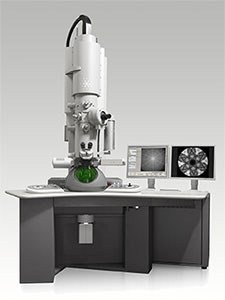University of Minnesota is first in the world to install FEI ultrafast electron microscope

Contacts:
Brooke Dillon, University News Service, bldillon@umn.edu, (612) 624-2801
Rhonda Zurn, College of Science and Engineering, rzurn@umn.edu, (612) 626-7959
New technology that measures changes at incredibly small scales is expected to make a big impact on research
MINNEAPOLIS / ST. PAUL (11/11/2013) —The University of Minnesota-Twin Cities will be the first in the world to install a new FEI Tecnai™ Femto ultrafast electron microscope (UEM) that will be used to examine the dynamics of materials at the atomic and molecular scale over time spans measured in femtoseconds (one millionth of a billionth of a second). Researchers expect that the technology will enable them to conduct fundamental research on the structure and dynamics of matter that could lead to new solutions in energy, medicine, and digital technologies.
The new Tecnai™ Femto UEM, produced by FEI Company, is the first system to commercialize the patented ultrafast electron microscopy technology pioneered by Nobel laureate Professor Ahmed Zewail at the California Institute of Technology. The equipment will be installed later this month in the University of Minnesota Shepherd Laboratories and then moved to the Gore Annex of Amundson Hall when construction is completed next year.
Unlike an optical microscope that uses light to form images, an electron microscope uses a high-energy beam of electrons to create an image of the specimen. It is capable of much higher magnifications and has a greater resolving power than a light microscope, allowing it to see much smaller objects in finer detail. The newly developed UEM combines these high magnifications with the added ability to watch matter change and evolve in real time on very fast time scales.
“Our new microscope will be used at incredibly small and fast scales, and it should have a big impact on our research,” said David Flannigan, an assistant professor of chemical engineering and materials science in the University of Minnesota’s College of Science and Engineering and a former member of Professor Zewail's research team at Caltech. “Over the last decade microscope manufacturers like FEI have developed instruments that have made observations of objects as small as individual atoms seemingly routine. Ultrafast electron microscopy now gives us a powerful tool to look at the movements and changes that occur at this scale.”
Flannigan explained that because the size scale is so small, the time scale is also condensed. It doesn't take very long for atoms to move less than one nanometer (one billionth of a meter). During the developmental stages of the new Tecnai™ Femto UEM, researchers were able to measure changes over time periods as short as tens of femtoseconds. Using this newly commercialized technology, scientists expect to be able to study a wide range of fundamental atomic-scale processes, including real-time energy propagation, structural transformations, and variations in electric and magnetic fields.
"Until now, the only commercially released instruments that could look at processes at this time scale were limited to observations of bulk materials,” said Trisha Rice, FEI's vice president and general manager of the Materials Science Business Unit. “The Tecnai™ Femto UEM is the first to combine femtosecond time resolution with nanometer spatial resolution, allowing researchers to see the structural changes that occur at the atomic scale in response to energetic stimuli.”
The arrival of the Tecnai™ Femto UEM comes on the heels of the installation of another electron microscope at the University of Minnesota. The FEI Titan™ G2 60- 300 aberration-corrected analytical scanning and transmission electron microscope was installed in Shepherd Laboratories earlier this year. This ultra-high-resolution electron microscope can be used to see sub-0.1 nanometer objects.
“Together, these two pieces of equipment establish the University of Minnesota as a world-class electron microscopy center,” said Frank Bates, head of the University’s Department of Chemical Engineering and Materials Science. “Every computer chip and solar cell is based on materials research. Modern technology is developed one atom at a time. This is a big step forward.”
